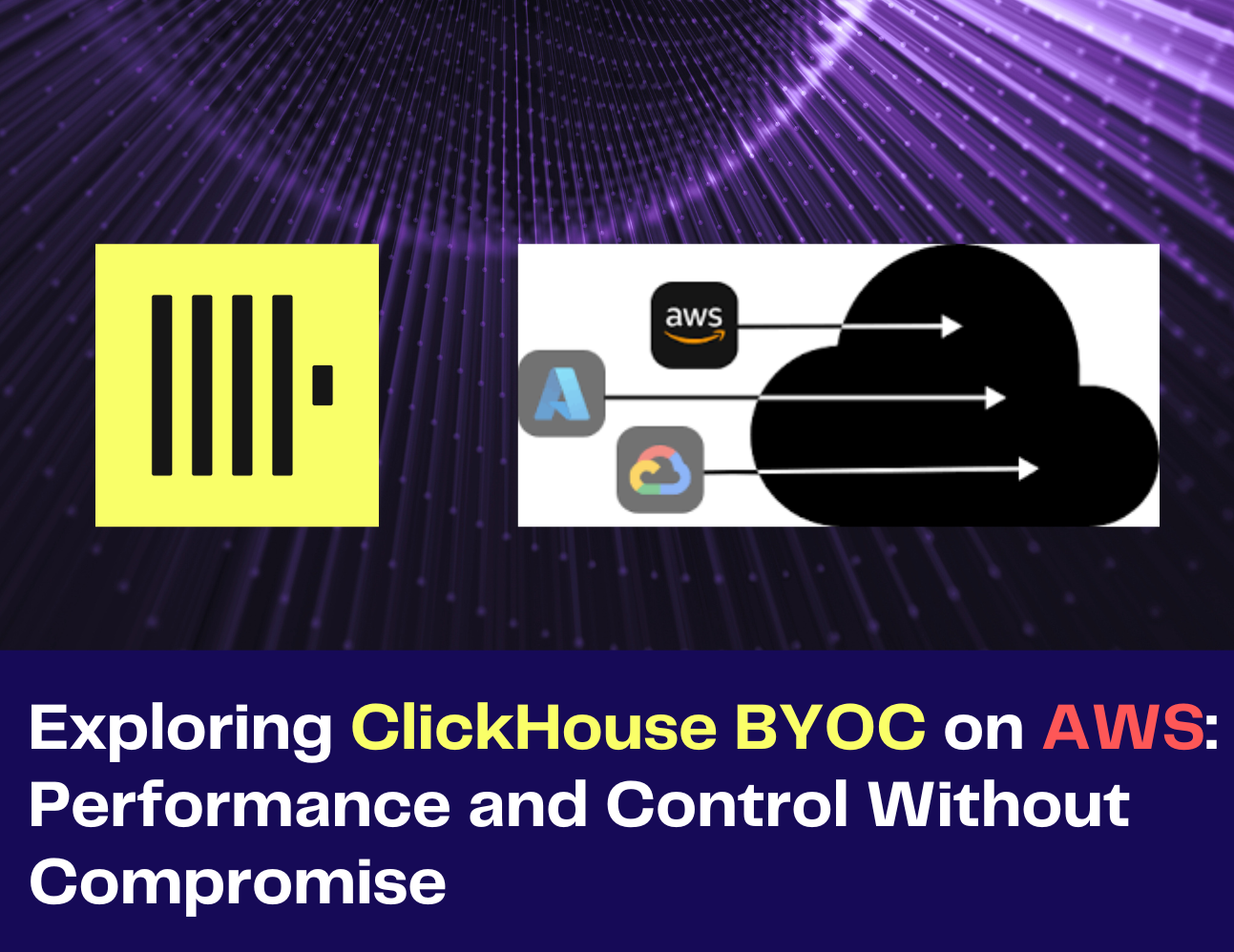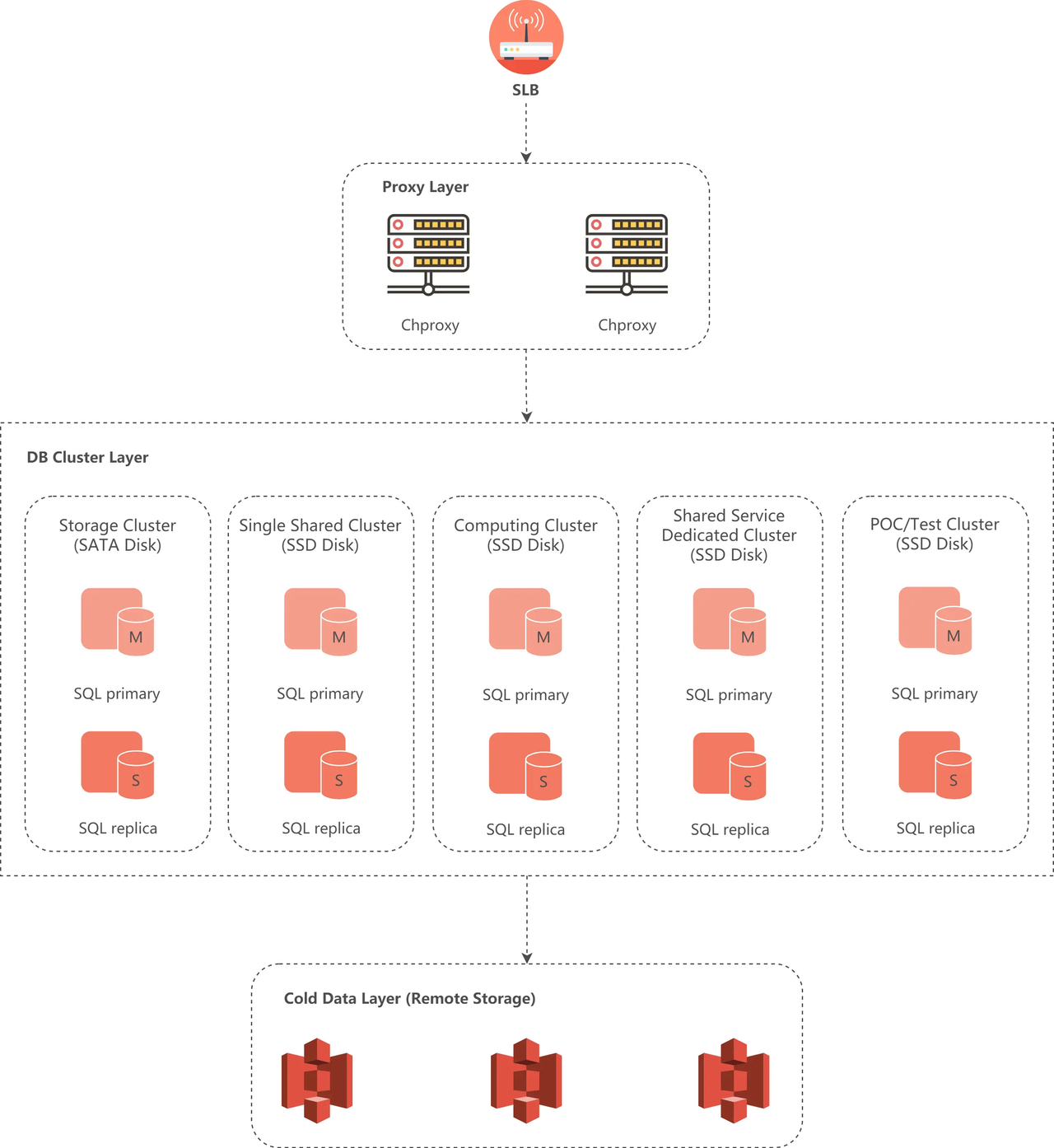Exploring ClickHouse BYOC on AWS: Performance and Control Without Compromise

Peter Hanssens
—Apr 15, 2025

Exploring ClickHouse BYOC on AWS: Performance and Control Without Compromise
At Cloud Shuttle, we stay deeply connected to the trends shaping the future of data engineering. One development that's been capturing our attention lately is ClickHouse's Bring Your Own Cloud (BYOC) capability—especially in the AWS ecosystem.
As companies build increasingly complex data systems, the tension between control, security, and performance becomes more pronounced. While managed analytics platforms offer ease of use, they often abstract away the infrastructure in ways that limit flexibility. This is where ClickHouse BYOC shines—by offering a managed experience without giving up control over your environment.
What is ClickHouse BYOC?
ClickHouse BYOC is an offering that enables organisations to deploy ClickHouse Cloud in their own cloud environment, while ClickHouse handles orchestration through a centralised control plane. Your compute, storage, and data traffic remain inside your VPC, while the control plane (used for provisioning, monitoring, and billing) is run by ClickHouse.
This separation of control and data planes is described in ClickHouse's official documentation and addresses many of the common security and compliance concerns seen in regulated industries like healthcare, fintech, and defence.
 Image source: ClickHouse® High Availability Architecture
Image source: ClickHouse® High Availability Architecture
Why BYOC Matters in AWS Environments
AWS remains a popular cloud platform for analytics-heavy teams due to its rich ecosystem—S3, IAM, Lambda, EKS, and more. The BYOC model fits neatly into this environment by giving teams full control over:
- Networking (private endpoints, security groups, VPC peering)
- Resource optimisation (custom EC2 instance selection, storage tuning)
- Data residency and sovereignty (data never leaves your account)
More importantly, this model reduces egress costs, a common problem in fully-managed cloud analytics stacks where compute and storage may span across different networks or regions.
We've seen increased industry conversation around this shift toward "semi-managed" models—where you retain ownership of your infrastructure but offload orchestration overhead to the vendor. For example, companies like Snowflake and Databricks are also exploring flavours of this model with private deployments and customer-managed VPC setups.
 Image Source: Shopee ClickHouse Cold and hot data separation storage architecture and practice
Image Source: Shopee ClickHouse Cold and hot data separation storage architecture and practice
What We're Exploring at Cloud Shuttle
We've been running internal evaluations of ClickHouse BYOC on AWS, testing architectural patterns that combine:
- Amazon S3 for persistent object storage
- EC2 instances for compute clusters
- ClickHouse replication + sharding strategies
- Materialised views for derived metrics pipelines
One area we're particularly interested in is how materialised views and columnar compression behave in BYOC setups—especially when storage is decoupled using S3 and the compute nodes are tuned to run on spot or savings-plan EC2s. ClickHouse's default codecs like LZ4 and ZSTD offer impressive compression ratios without trading off too much on decompression speed, which is a sweet spot for analytic performance.
 Image Source: Incremental Materialized View | ClickHouse Docs
Image Source: Incremental Materialized View | ClickHouse Docs
Why This Matters for the Market
What makes BYOC such an exciting trend is that it addresses multiple pain points simultaneously:
- Security-conscious enterprises can meet regulatory needs while benefiting from ClickHouse's blazing speed.
- Cost-aware teams can design cost-efficient EC2/S3 configurations while still leveraging ClickHouse's orchestration logic.
- Data platform architects can integrate BYOC more cleanly into modern infrastructure-as-code (IaC) setups using Terraform, Pulumi, or AWS CDK.
It's also part of a wider movement: the decoupling of compute and storage, the growing popularity of open standards (like Apache Arrow and Iceberg), and the shift toward self-serve data platforms all play into the rise of BYOC models.
 Image Source: ClickHouse Cloud & Amazon S3 Express One Zone: Making a blazing fast analytical database even faster | Amazon Web Services
Image Source: ClickHouse Cloud & Amazon S3 Express One Zone: Making a blazing fast analytical database even faster | Amazon Web Services
Additional Resources and Inspiration
We recently hosted a webinar with Sai Srirampur (Product Leader, DB Integrations, ClickHouse, Prev. CEO and Co-founder, PeerDB) where we explored a Postgres to ClickHouse migration using ClickPipes and PeerDB. While that session focused on migration tooling, it sparked broader conversations on how modern teams want more flexibility and less vendor lock-in—a goal that BYOC deployment models directly support.

If you missed it, the webinar covers:
- Postgres replication into ClickHouse
- Use of ClickPipes as a lightweight change data capture mechanism
- Real-world performance and sync latency comparisons
Final Thoughts
At Cloud Shuttle, we keep a close pulse on where the data engineering space is headed—not just to build cool prototypes, but to prepare our clients for what's next. While we haven't yet implemented ClickHouse BYOC in production, our internal experiments are shaping the way we think about cloud-native analytics architecture.
The takeaway? ClickHouse BYOC offers something rare in the analytics world: the power of a managed platform, with the freedom of infrastructure control.
We believe this model will become increasingly relevant in industries where performance, sovereignty, and cost control all need to co-exist—especially in AWS environments.
